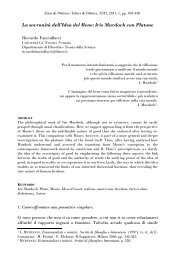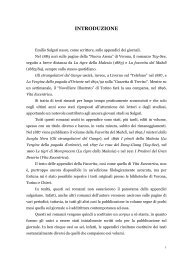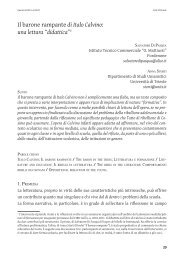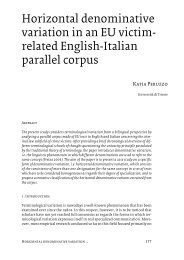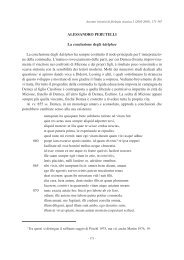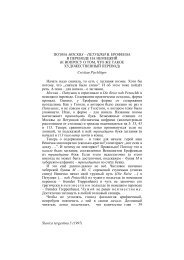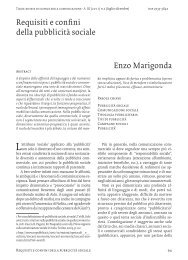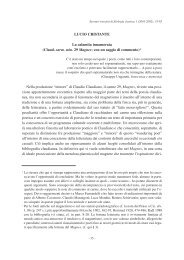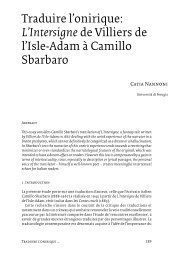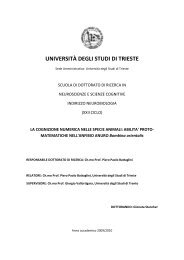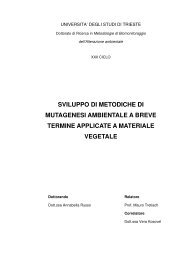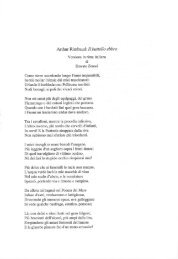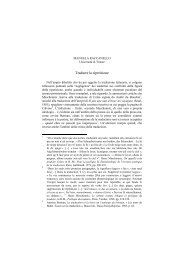UNIVERSITÀ DEGLI STUDI DI TRIESTE - OpenstarTs - Università ...
UNIVERSITÀ DEGLI STUDI DI TRIESTE - OpenstarTs - Università ...
UNIVERSITÀ DEGLI STUDI DI TRIESTE - OpenstarTs - Università ...
You also want an ePaper? Increase the reach of your titles
YUMPU automatically turns print PDFs into web optimized ePapers that Google loves.
Chapter 7 - Gas distribution in a two-compartment model ventilated in high-frequency<br />
percussive and pressure-controlled modes<br />
We based our study on the two-compartment parallel model introduced by Otis [Otis et al,<br />
1956], extending our previous studies [Lucangelo et al, 2004; Lucangelo et al, 2006]. In such<br />
a model the distribution of the overall flow in the separate branches depends on the<br />
impedances of each independent compartment. Under spontaneous or conventional<br />
mechanical ventilation, if the elastance (E) and resistance (R) of each pathway are identical in<br />
both branches, there will be no difference in the volume flowing into each one. However, if<br />
the separate compartments present different time constants, they will fill up according to their<br />
time constants, i.e., a shorter time constant will allow a larger volume into the corresponding<br />
compartment. The parameters of the fixed compartment were kept constant throughout the<br />
experiment and were generated by a Siemens lung simulator (Siemens Test Lung 190;<br />
Siemens AG, Munich, Germany), while the variable one was provided by a singlecompartment<br />
lung simulator (Medishield, Harlow Essex, UK) characterized by three elastic<br />
loads and three resistive loads. As a result, nine different combinations were randomly tested.<br />
Ventilation of the mechanical model was provided by two different equipments: (1) HFPV<br />
was generated by a volumetric diffusive respirator (VDR-4; Percussionaire Corporation,<br />
Sandpoint, ID, USA) that delivers minibursts of respiratory gas mixtures in the proximal<br />
airways throughout the breath. (2) PCV was delivered by a Siemens Servo 900c ventilator<br />
(Siemens, Solna, Sweden). Both ventilators produced the same peak pressure, respiratory rate,<br />
and I/E ratio. No positive end-expiratory pressure (PEEP) was used in the experiments.<br />
Pressure–time curves obtained with HFPV and PCV during one breathing cycle are shown<br />
in Fig. 7.1. Comparing both ventilatory modes, it follows that, for the same loading, PCV<br />
generates higher total tidal volume (VT) than HFPV. This was due to the larger volume<br />
directed to the fixed compartment during PCV, since there was no difference between the<br />
fractional volume injected into the variable compartment by the two ventilatory modes. In this<br />
regard, no difference was found in the time constant of the variable compartment when the<br />
two methods were compared.<br />
91



